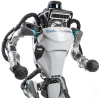Current Applications and Future Perspectives of Artificial and Biomimetic Intelligence in Vascular Surgery and Peripheral Artery Disease
- PMID: 39194444
- PMCID: PMC11351193
- DOI: 10.3390/biomimetics9080465
Current Applications and Future Perspectives of Artificial and Biomimetic Intelligence in Vascular Surgery and Peripheral Artery Disease
Abstract
Artificial Intelligence (AI) made its first appearance in 1956, and since then it has progressively introduced itself in healthcare systems and patients' information and care. AI functions can be grouped under the following headings: Machine Learning (ML), Deep Learning (DL), Artificial Neural Network (ANN), Convolutional Neural Network (CNN), Computer Vision (CV). Biomimetic intelligence (BI) applies the principles of systems of nature to create biological algorithms, such as genetic and neural network, to be used in different scenarios. Chronic limb-threatening ischemia (CLTI) represents the last stage of peripheral artery disease (PAD) and has increased over recent years, together with the rise in prevalence of diabetes and population ageing. Nowadays, AI and BI grant the possibility of developing new diagnostic and treatment solutions in the vascular field, given the possibility of accessing clinical, biological, and imaging data. By assessing the vascular anatomy in every patient, as well as the burden of atherosclerosis, and classifying the level and degree of disease, sizing and planning the best endovascular treatment, defining the perioperative complications risk, integrating experiences and resources between different specialties, identifying latent PAD, thus offering evidence-based solutions and guiding surgeons in the choice of the best surgical technique, AI and BI challenge the role of the physician's experience in PAD treatment.
Keywords: artificial intelligence; artificial neural network; biomimetic intelligence; convolutional neural network; peripheral arterial disease; vascular surgery.
Conflict of interest statement
The authors declare no conflicts of interest.
Figures




References
-
- Tang X., Wang T., Shi H., Zhang M., Yin R., Wu Q., Pan C. Artificial Intelligence and Big Data Technologies in the Construction of Surgical Risk Prediction Model for Patients with Coronary Artery Bypass Grafting. Comput. Intell. Neurosci. 2023;2023:9575553. doi: 10.1155/2023/9575553. - DOI - PMC - PubMed
Publication types
LinkOut - more resources
Full Text Sources

